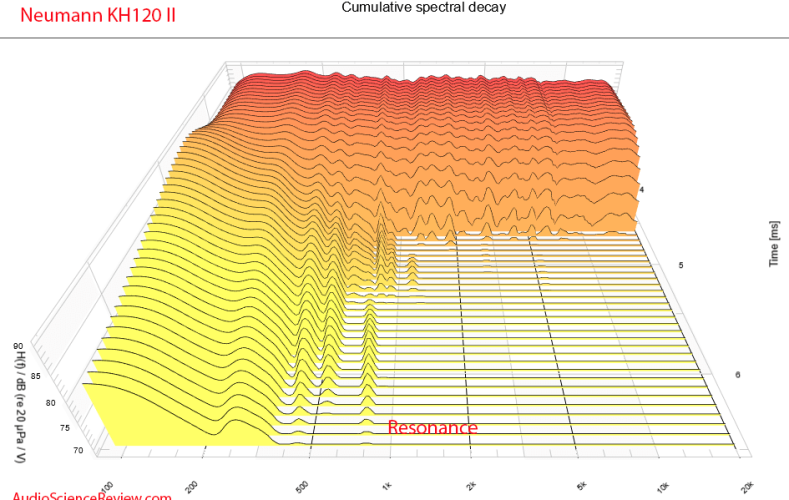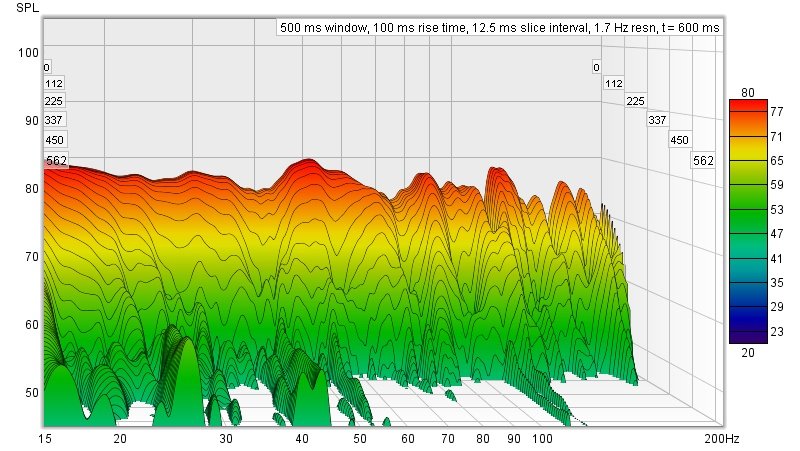Not worth it...but..
If you have a Sound Science approved system....128kb mp3s on a 100 dollar DAC? nothing you do below will matter( or anything else for that matter). EQ away into infinity.
However, if you have a High end Optimized system. EQ is like painting a mustache on the Mona Lisa.
Here's what Google AI has to say on the subject.
To address the question of whether EQ causes distortion, here's a structured summary of the supporting evidence and mechanisms:
### 1. **Gain-Related Clipping**
- **Evidence**: Boosting frequencies with EQ increases the amplitude of specific frequency bands. If the cumulative signal exceeds the system's maximum headroom (e.g., 0 dBFS in digital systems), **clipping distortion** occurs.
- **Source**: Audio engineering textbooks like *"Mixing Secrets for the Small Studio"* by Mike Senior emphasize gain staging to prevent clipping when using EQ boosts.
### 2. **Analog EQ Harmonic Distortion**
- **Evidence**: Analog hardware EQs (e.g., tube or transistor-based units) inherently add **harmonic distortion** due to nonlinear components. This is often marketed as "warmth" (e.g., Pultec EQs).
- **Source**: Technical specifications for analog gear often list THD (Total Harmonic Distortion), such as the Universal Audio 1073 EQ (THD: ~0.1% at +24 dBu).
### 3. **Phase Distortion**
- **Evidence**: Analog and minimum-phase digital EQs introduce **phase shifts** around adjusted frequencies, altering transient response. This can cause "smearing" (a form of phase distortion).
- **Exception**: Linear-phase EQs minimize phase shifts but may introduce pre-ringing artifacts.
- **Source**: AES (Audio Engineering Society) papers on linear vs. minimum-phase EQ trade-offs.
### 4. **Inter-Sample Peaks (Digital Systems)**
- **Evidence**: Boosting frequencies in digital audio can create inter-sample peaks during reconstruction, exceeding 0 dBFS and causing distortion in DACs.
- **Source**: ITU-R BS.1770 guidelines on headroom management for broadcast audio.
### 5. **Plugin Emulations**
- **Evidence**: Analog-modeled EQ plugins (e.g., Waves SSL E-Channel) intentionally emulate harmonic distortion from original hardware, as noted in their user manuals.
### 6. **Best Practices in Mixing**
- **Evidence**: Engineers often advise "cutting rather than boosting" to avoid distortion. For example, reducing low frequencies to prevent muddiness instead of boosting highs excessively.
- **Source**: Industry professionals like Bob Katz (*Mastering Audio*) and educational platforms (e.g., Sound on Sound articles).
### Conclusion
EQ can cause distortion through **clipping**, **harmonic coloration** (in analog systems), **phase shifts**, or **inter-sample peaks**. The risk depends on EQ type (analog vs. digital), gain staging, and usage practices. Proper headroom management and mindful boosting/cutting mitigate these effects.
### **What Causes Phase Distortion in EQ?**
1. **How EQ Works**:
- Equalizers (analog or digital) use filters (e.g., high-pass, low-pass, bell curves) to boost or cut frequencies.
- These filters inherently alter the **phase relationship** between frequencies in the signal. This is not a flaw but a mathematical property of how filters work.
2. **Phase Shift ≠ Phase Distortion**:
- **Phase shift** occurs naturally in all minimum-phase EQs (most analog and digital EQs). It’s a linear change in timing for specific frequencies.
- **Phase distortion** becomes audible when these shifts:
- Smear transients (e.g., blurring the attack of a snare drum).
- Create comb filtering when mixing phase-shifted signals with unprocessed ones (e.g., layering two guitar tracks with different EQ settings).
---
### **Evidence from Reputable Sources (Paraphrased)**
1. **AES (Audio Engineering Society) Research**:
- Studies confirm that **minimum-phase EQs** (common in analog and most digital EQs) introduce frequency-dependent phase shifts. These shifts are more pronounced with **steeper filter slopes** (e.g., 24 dB/octave high-pass filters).
- **Linear-phase EQs** eliminate phase shifts but introduce **pre-ringing** (a “ghost” sound before transients), which can be more audible than phase distortion in some cases.
2. **Bob Katz (Mastering Engineer, Author of *Mastering Audio*)**:
- Warns that excessive EQ boosts/cuts on multiple tracks can accumulate phase issues, degrading the stereo image and transient clarity. Recommends using EQ sparingly and checking phase coherence.
3. **Dan Worrall (Audio Expert, YouTube Educator)**:
- Demonstrates that boosting a frequency with EQ shifts the phase of nearby frequencies, which can cancel out harmonics when mixed with other tracks. This is especially problematic in mastering or parallel processing.
---
### **How to Test Phase Distortion Yourself**
1. **Experiment 1: Transient Smearing**:
- **Step 1**: Load a drum loop with sharp transients (e.g., a snare hit) into your DAW.
- **Step 2**: Apply a steep boost (e.g., +10 dB at 2 kHz) using a minimum-phase EQ (e.g., FabFilter Pro-Q 3).
- **Result**: The transient will sound “softer” or less defined due to phase shifts around the boosted frequency.
2. **Experiment 2: Phase Cancellation**:
- **Step 1**: Duplicate a vocal track. Apply a high-pass filter (e.g., 100 Hz) to one copy.
- **Step 2**: Invert the phase of the filtered track and play both together.
- **Result**: You’ll hear cancellation of frequencies around the filter’s cutoff point, proving phase shifts occurred.
---
### **When Does Phase Distortion Matter?**
- **Critical Situations**:
- Mixing drum overheads or multi-miked instruments (e.g., phase shifts between mics ruin coherence).
- Mastering with aggressive EQ adjustments.
- Parallel processing (EQ’d and dry signals combined).
- **Solutions**:
- Use **linear-phase EQ** for surgical adjustments on full mixes (but avoid it on transients due to pre-ringing).
- Follow the “**cut, don’t boost**” rule to minimize phase shifts.
- Check phase alignment with tools like **correlation meters** or by inverting polarity.
---
### **Key Takeaway**
Phase distortion is a **trade-off** in EQ use. While unavoidable in minimum-phase designs, it’s only problematic if it harms the sound. Trust your ears: if a track loses clarity after EQ, phase shifts might be the culprit.
Phase distortion caused by EQ, particularly
minimum-phase EQ, arises from the way these EQs alter the amplitude of different frequencies. To change the level of specific frequencies, these EQs inherently introduce shifts in the
phase (the timing of the waveform) of those frequencies and their surrounding frequencies.
Here's a breakdown of why this happens:
- Minimum-Phase Filters: Most common analog and digital EQs utilize minimum-phase filters. The fundamental principle behind how these filters work involves creating phase shifts to achieve the desired frequency response changes (boosts or cuts).
- Uneven Delay: When an EQ boosts or cuts certain frequencies, the processing involved causes those frequencies to be delayed by a different amount compared to other frequencies. This difference in delay across the frequency spectrum is what we perceive as phase distortion.
- Time Smearing:These phase shifts can alter the time relationships between different frequency components of a sound. This can lead to a smearing of transients (the sharp attack of sounds), affecting the clarity and punchiness of the audio. It can also impact the stereo image, making it less focused.
Analogy: Imagine a group of runners starting a race at the same time. If some runners are forced to take a slightly longer route or are briefly slowed down, they will arrive at the finish line at slightly different times than the others, even though they all started together. Similarly, EQing different frequencies can cause them to arrive at your ears at slightly different times, altering the original temporal relationships within the sound.
Linear-Phase EQ as a Contrast:
It's important to note that there's another type of EQ called
linear-phase EQ. These EQs are designed to avoid phase distortion across the frequency spectrum. They achieve this by applying an equal amount of delay to all frequencies. While linear-phase EQs preserve the phase relationships, they introduce an overall latency (delay) to the audio signal and can sometimes create a pre-ringing artifact (a faint echo
before the main sound).
In summary, phase distortion is an inherent characteristic of minimum-phase EQs, resulting from the differential delay applied to various frequencies to achieve equalization. While often subtle, it can become more noticeable with drastic EQ changes or when dealing with signals that have critical phase relationships, such as multi-mic recordings.
Anyways.















